We love this authentic Texas chili recipe with beef chuck, dried red chiles, and spices. The beef simmers in an outrageously flavorful red chile sauce until fork tender. It’s delicious!
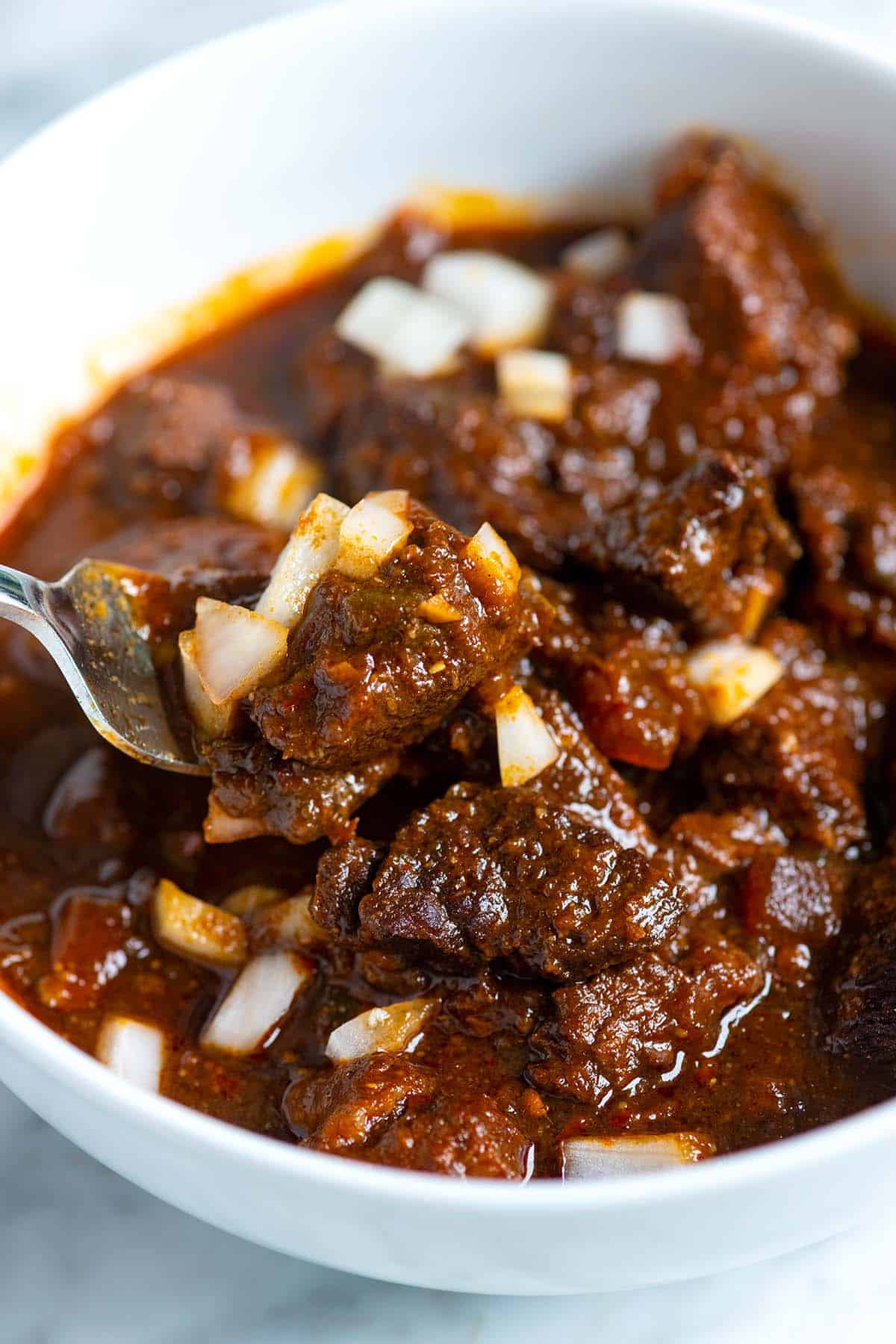
If you have never had Texas red chili (also called red chili, Bowl’ o Red, or chile con carne), I urge you to try it. In this recipe, instead of ground beef, we use cubes of beef chuck and cook it low and slow, simmering away in a mixture of spices, stock, and blended chile peppers.
This chili is delicious, but we love other chili recipes on Inspired Taste. For a quicker option, try our homemade chili (made with ground beef and chili powder) or this white chicken chili!
Key Ingredients
- Beef: I use cubed beef chuck, not ground beef. After a few hours of simmering, the beef becomes super tender. Beef chuck or stew meat works well (look for cuts rich in connective tissue and fat for the best flavor and texture).
- Chile Peppers: For authentic chili, I use whole dried red chile peppers, not chili powder. My go-to combo is guajillo (for smokiness), ancho (sweet and fruity), and New Mexico or California (clean, sweet heat). Feel free to experiment, but this blend is pure magic. If you want to make chili with chili powder, use this homemade chili recipe instead.
- Stock: A bit of liquid helps blend those chiles, and while water works, I prefer stock for a richer flavor base. Veggie broth, chicken stock, or beef stock will work.
- Onion, Poblano, and Garlic: These aromatics build a simple yet flavorful foundation for our chili.
- Spices: This is my favorite part! I use a cinnamon stick, cumin, and allspice for a warm, complex flavor. It’s so good!
- Masa Harina: This is my secret weapon. Stirring in a bit of masa harina (mixed with water) towards the end gives the chili a thicker texture and a subtle, toasty corn flavor. Trust me, it’s a game-changer. Masa harina is what I use to make homemade corn tortillas. If you do not have it available, chop a few corn tortillas into small pieces and stir them into the chili (they break down and disappear into the chili).
How to Make Texas Chili
This Texas chili recipe is similar to making beef stew. There’s a little prep, then hands-off cooking.
First, I cut the beef into 1-inch chunks and sear them in the pot I’ll use for the chili. You don’t need to sear every side of the meat, so don’t worry about being perfect.
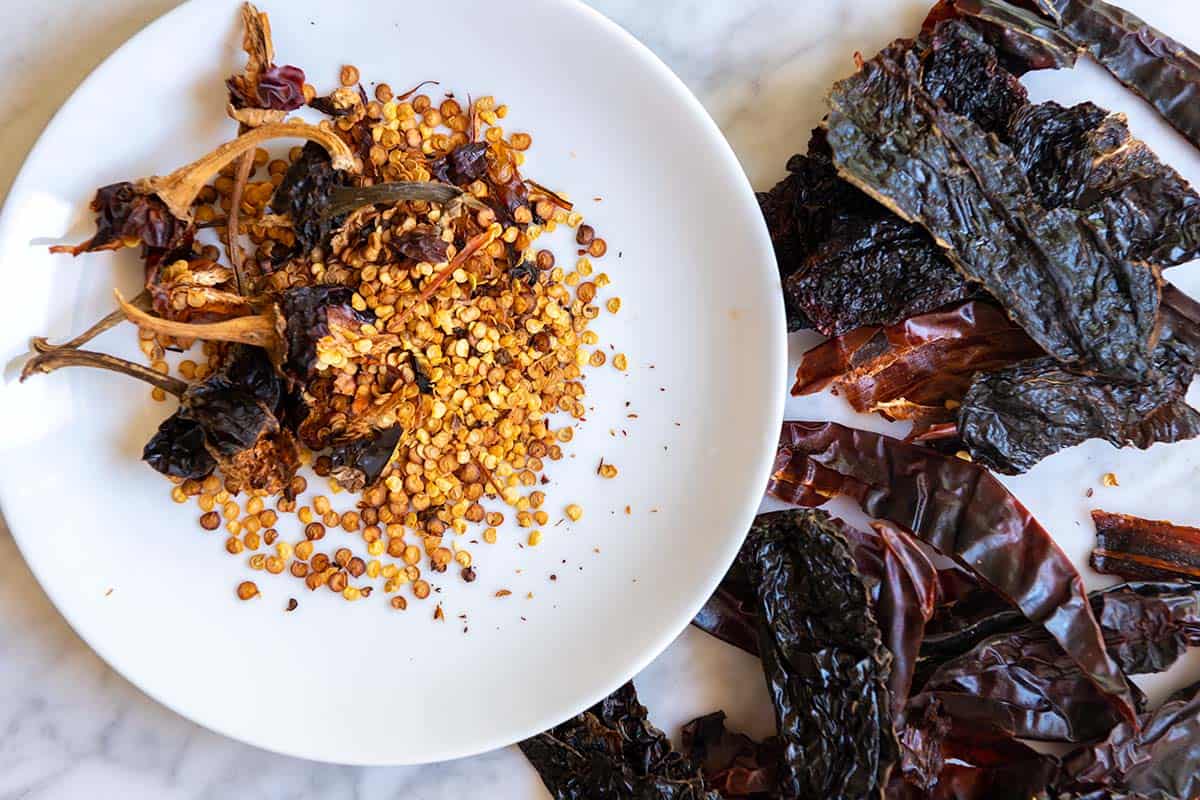
Next, I make the chili paste using dried whole chiles. Don’t be intimidated if you haven’t worked with dried chiles before, our recipe guides you through it.
Remove the stems and seeds from each pepper (I use scissors to snip the top and tap out the seeds), then add the cleaned peppers to a saucepan with hot water, cover, and set aside for 20 minutes or until softened. Transfer the softened chiles to a blender, add stock, and blend into a chili paste. (This is also how I make homemade enchilada sauce.)
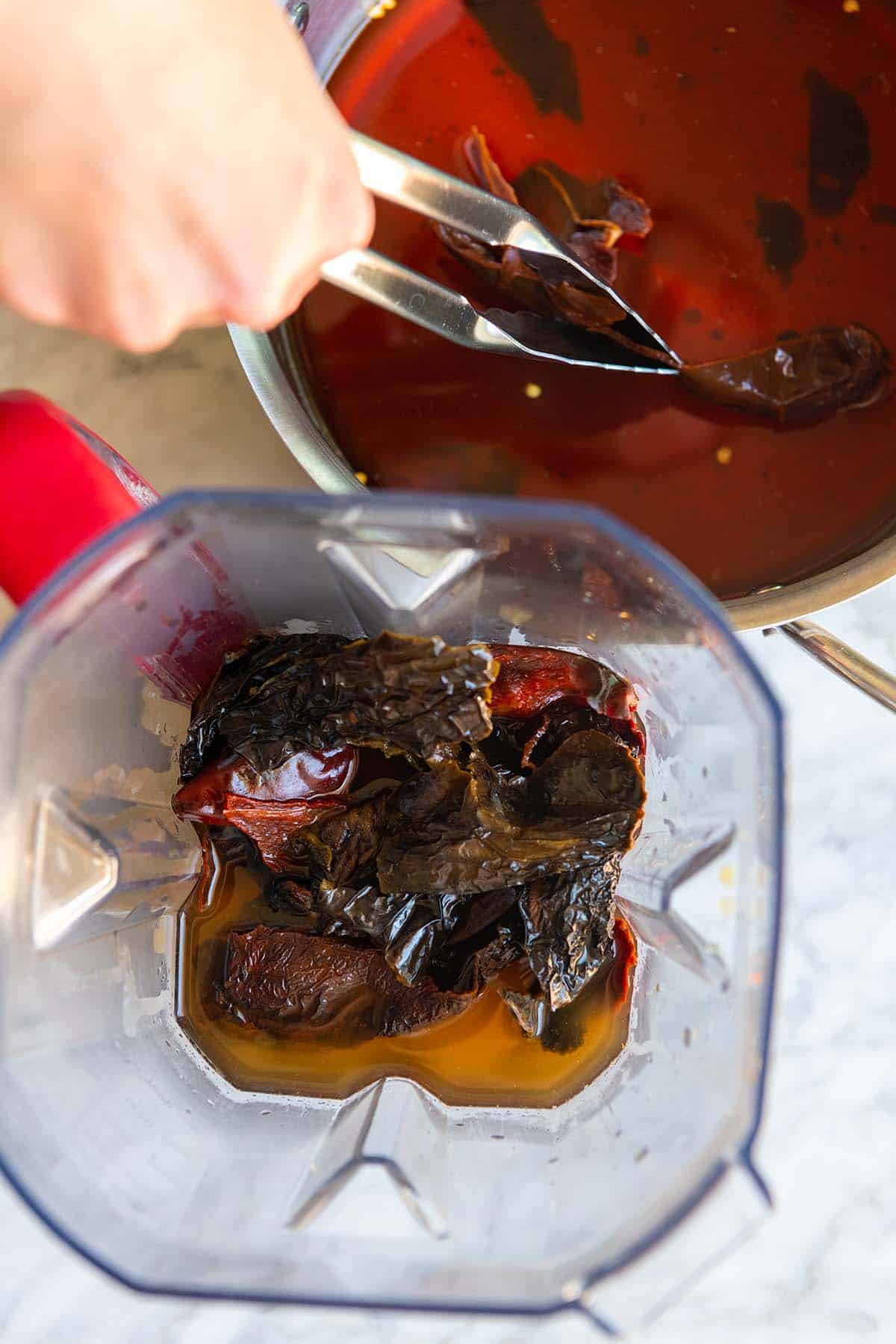
Now that the beef is browned and the chili paste is made, it’s time to combine everything. Cook diced onions, poblano peppers, and garlic in the same pot, then add spices, the blended chili peppers, a bit more stock, and the browned beef.
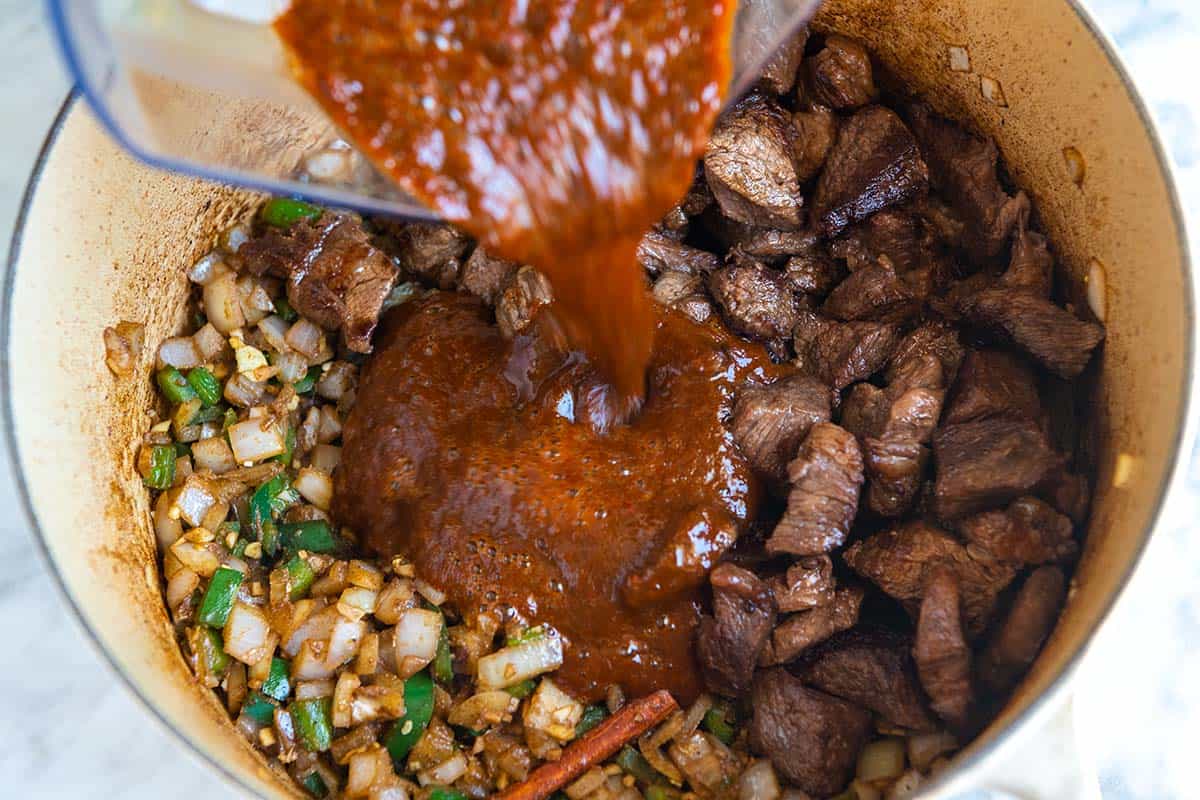
Bring this mixture to a low simmer, partially cover, and let it simmer until the beef is fork-tender. Finally, stir in a bit of masa harina mixed with water to thicken the chili and add a hint of sweet corn flavor. And that’s it.
You can serve Texas chili however you like. I love adding a handful of chopped raw onion, but cilantro, guacamole, crumbled Cojita cheese, cowboy candy (aka candied jalapeños), and a slice of homemade cornbread are all excellent options!
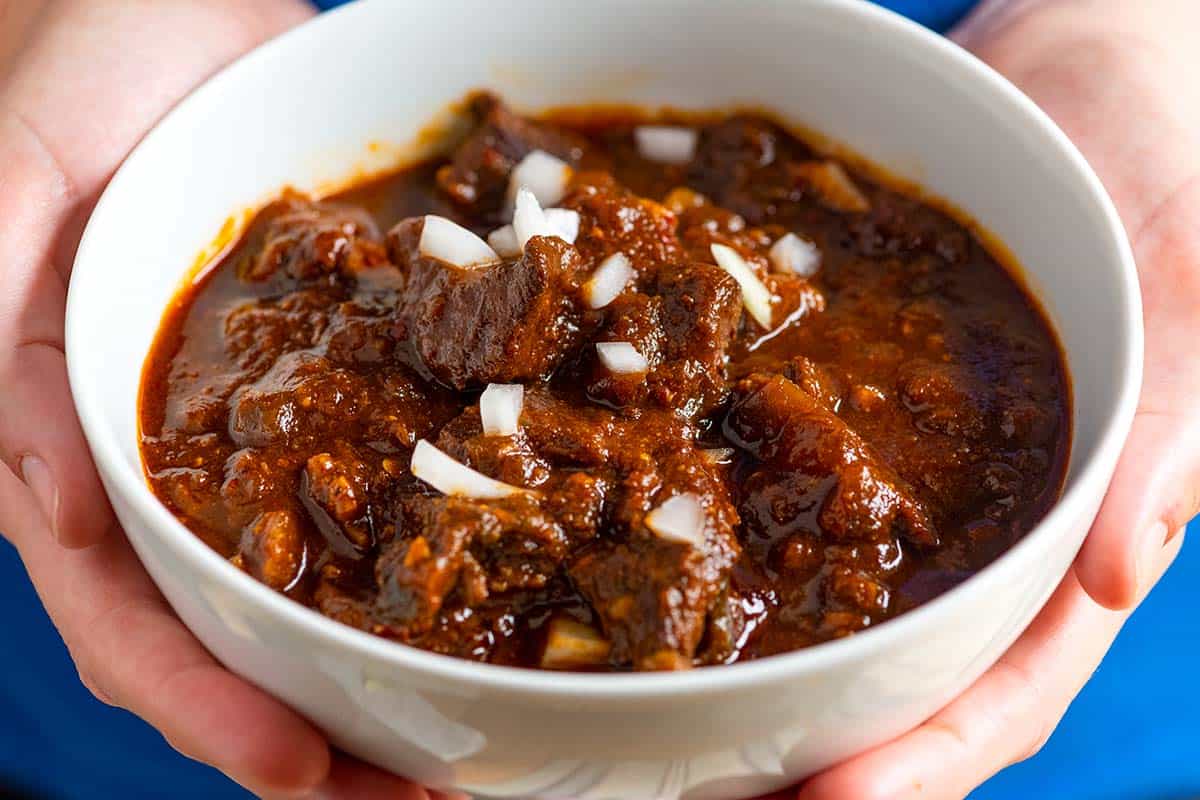
Our Favorite Texas Chili
- PREP
- COOK
- TOTAL
We love this Texas chili recipe made with beef, an easy homemade chili paste, and spices. We don’t add tomato or beans to this chili. Instead, beef chuck happily stands and simmers in an outrageously flavorful liquid until fork tender. It’s delicious!
Choose beef with a good amount of connective tissue and fat (like beef chuck). As it cooks, the connective tissue will break down, leaving you with incredibly tender cubes of meat.
You Will Need
4 pounds (1.8kg) beef chuck, trimmed of excess fat and gristle, cut into 1-inch cubes
3 whole dried New Mexico or California chili peppers
3 whole dried Guajillo chili peppers
3 whole dried Ancho chili peppers
6 cups (1.4L) rich vegetable, beef, or chicken stock
2 tablespoons vegetable oil
1 large onion, chopped
1 large fresh poblano pepper, seeds removed and chopped
6 medium garlic cloves, minced (2 tablespoons)
One 3-inch cinnamon stick
1 tablespoon ground cumin
1/2 teaspoon ground allspice
1/4 to 1 teaspoon cayenne pepper or chipotle powder, for spicy chili, see tips
1 tablespoon masa harina or 1 to 2 small corn tortillas torn into small pieces
Salt and fresh ground black pepper
Directions
- Prepare Chiles
1Use kitchen scissors to snip off the stems and shake or scrape out the seeds from the dried chile peppers. If you have sensitive skin, wear gloves to protect your hands from the pepper oils, and avoid touching your eyes.
2Cut the cleaned chile peppers into small pieces and toast them in a dry skillet over medium heat for about 5 minutes, stirring occasionally until fragrant. Be careful not to burn them.
3Transfer the toasted chiles to a large pot or bowl, cover with hot water, and place a lid on top to trap the steam. Let them sit for 20 minutes to soften and rehydrate. (If using a bowl, a large plate can serve as a lid.)
4Once the peppers are soft, use tongs to transfer them to a blender with 2 cups of stock. Secure the lid with a kitchen towel to prevent splattering, and blend the mixture, starting on low speed and gradually increasing until smooth. Set the blended chiles aside for later.
- Make Chili
1Heat a tablespoon of vegetable oil in the bottom of a deep Dutch oven set over medium-high heat. Add about half of the beef cubes in one layer and cook, without moving them, until the underside looks well browned, about 5 minutes.
2Stir and brown a second side. You do not need to brown all sides of the beef cubes; two sides are plenty. When at least two sides of the beef cubes look well browned, transfer them to a bowl and repeat with the remaining beef cubes, adding more oil as needed.
3If the pot is dry, add a teaspoon or more vegetable oil. Add the onions and peppers and cook until soft, about 5 minutes.
4Stir in the garlic, cinnamon stick, cumin, allspice, and cayenne pepper (optional), then cook for one more minute.
5Add the browned beef, blended chile peppers, and the remaining 4 cups of stock to the pot with onions and spices. Stir and scrape the bottom of the pot to lift any bits of stuck onion or beef.
6Bring the mixture to a boil, then reduce to a very low simmer.
7Partially cover the pot with its lid and cook until the beef is undeniably tender, 2 ½ to 3 hours. If you notice the chili is getting too dry while braising, add another cup of stock or water and reduce the heat a little.
8Mix a tablespoon of masa harina with 3 tablespoons of water into a smooth paste and stir it into the chili. If you are using corn tortillas instead of the masa paste, tear the tortillas into small pieces and stir them into the chili. After a minute or so, the tortillas will disintegrate into the chili.
9Take the chili off the heat, taste, and season to taste. If the chili needs more pop, add more salt, a splash of apple cider vinegar, or a bit of brown sugar.
Adam and Joanne's Tips
- Spicy chili: As written, this chili is not that spicy. There’s a little heat, but I’d put it in the mild category. To add extra spice, stir in cayenne pepper or chipotle pepper powder (I’d start with 1/4 teaspoon and add from there as the heat can build quickly). You can also add hot chili peppers to the chili paste (Arbol or Cascabel peppers are my favorite). One to two dried chili peppers should do it, and you can treat them in the same way as the other peppers called for in the recipe.
- Can I add beans? While beans are not typical in Texas chili, you can add beans to this chili. If you plan to add them, add cooked or drained canned beans when the chili is close to being done. This way, they will pick up some flavor but won’t break down too much.
- Seasoning the chili: Do your best to season with salt as you go, but if you find that your chili needs more of a pop when it’s finished cooking, you can stir in more salt, 1 to 3 teaspoons apple cider vinegar, a pinch of brown sugar, or if you are okay with something not authentic, a few dashes of fish sauce (trust me!).
- The nutrition facts provided below are estimates.

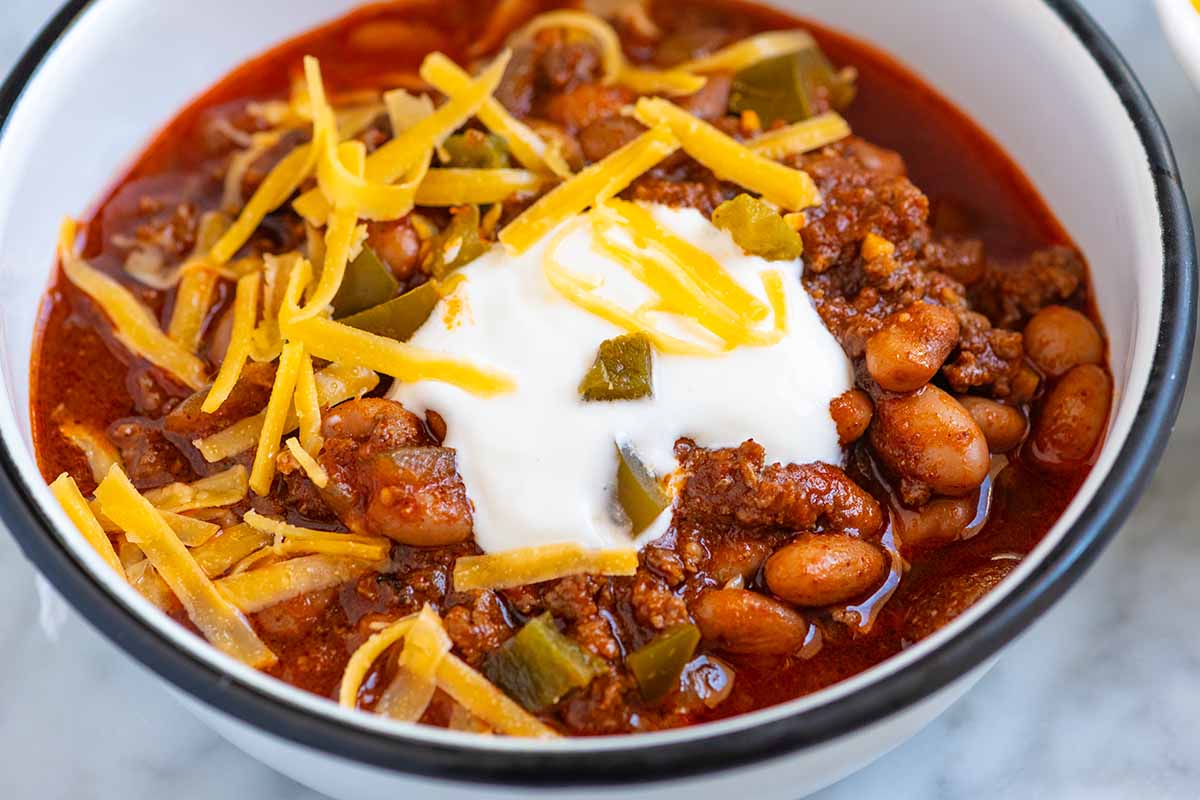
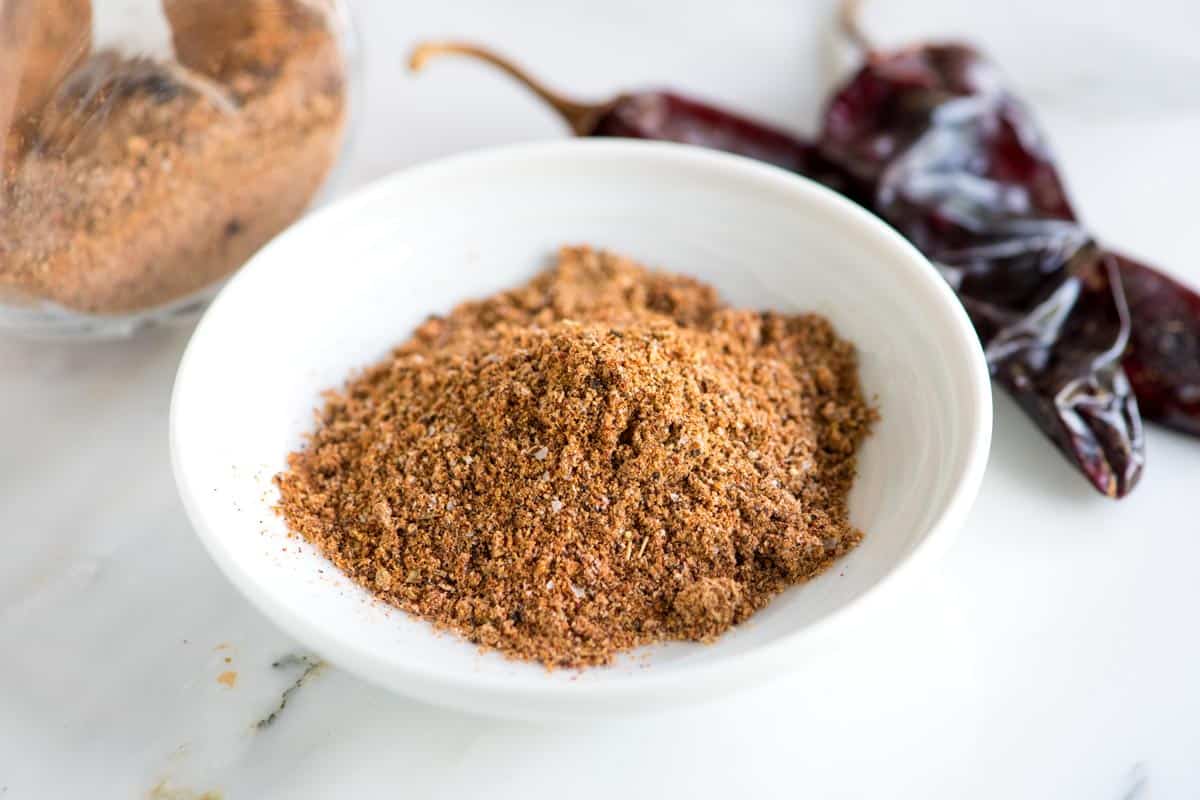
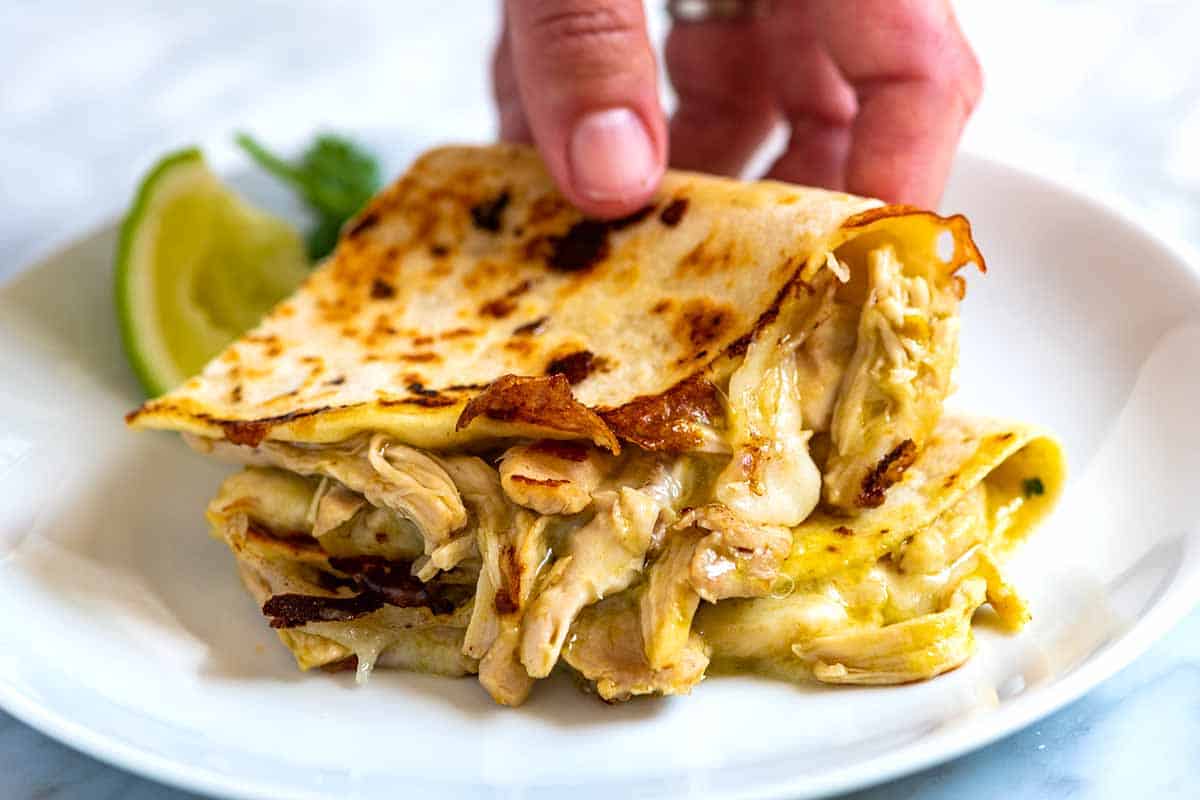
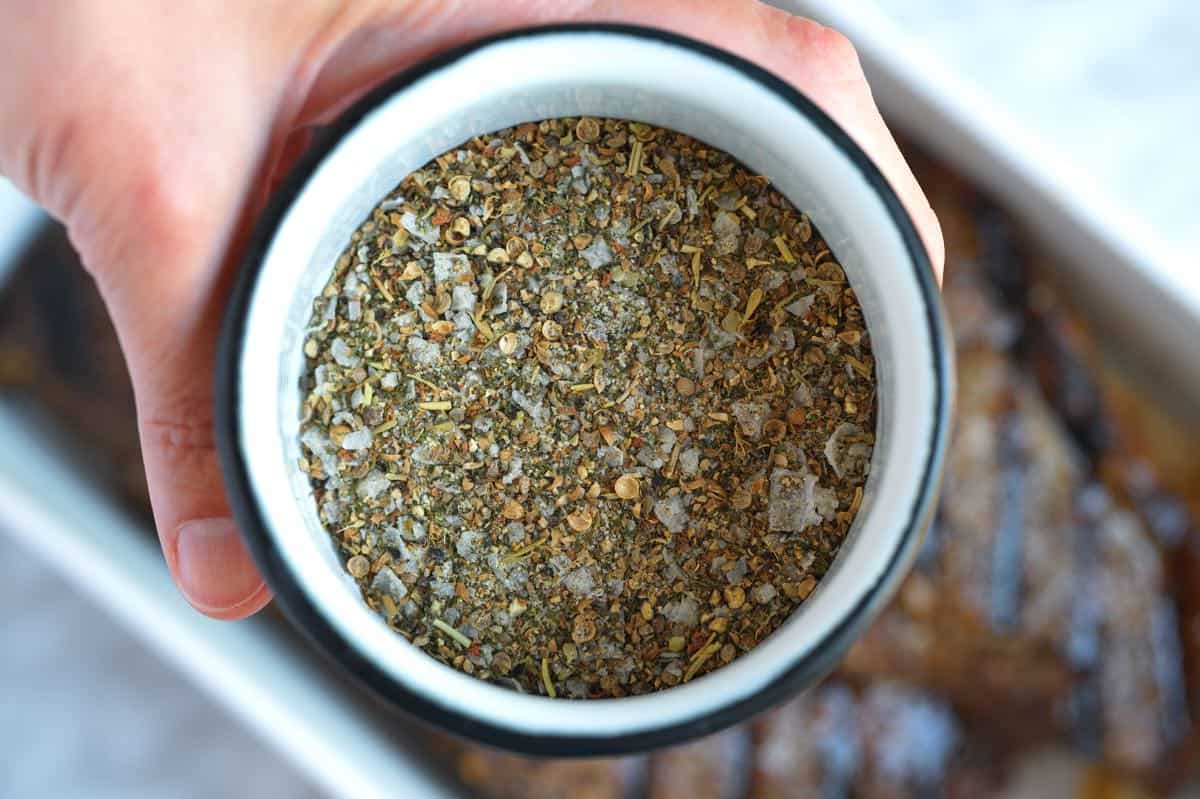
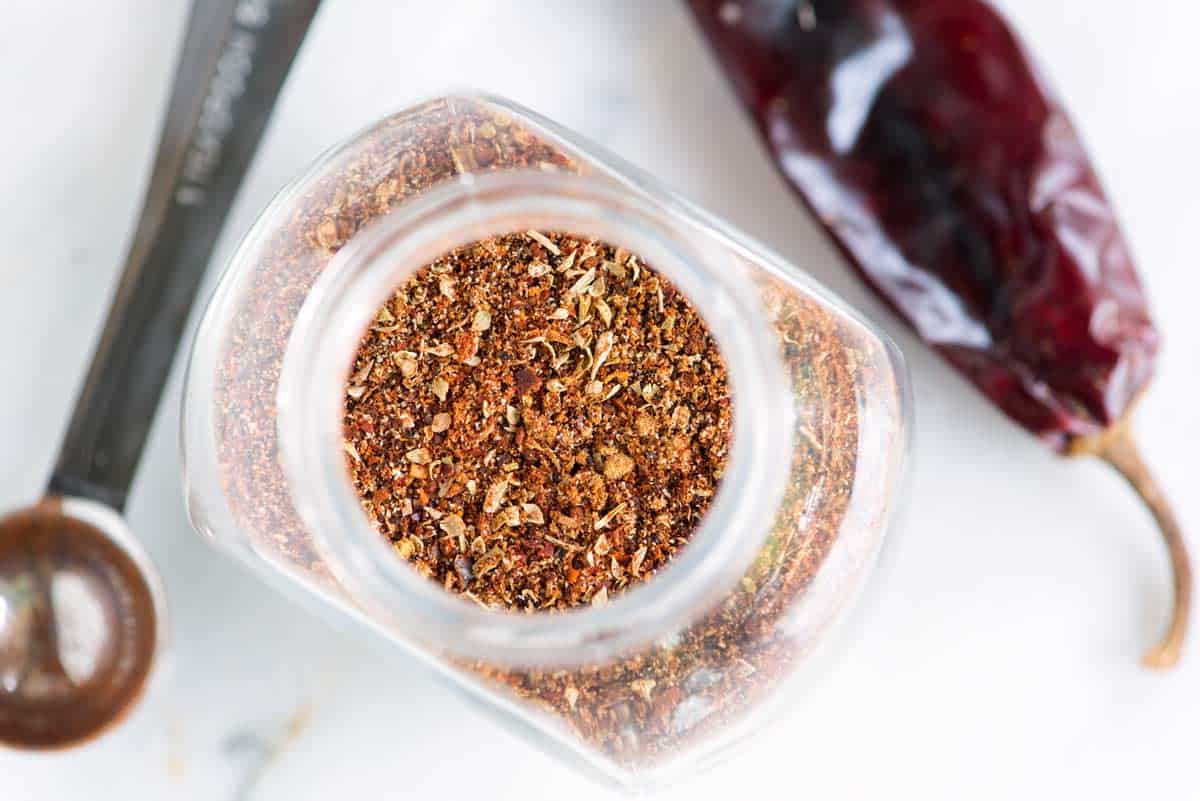
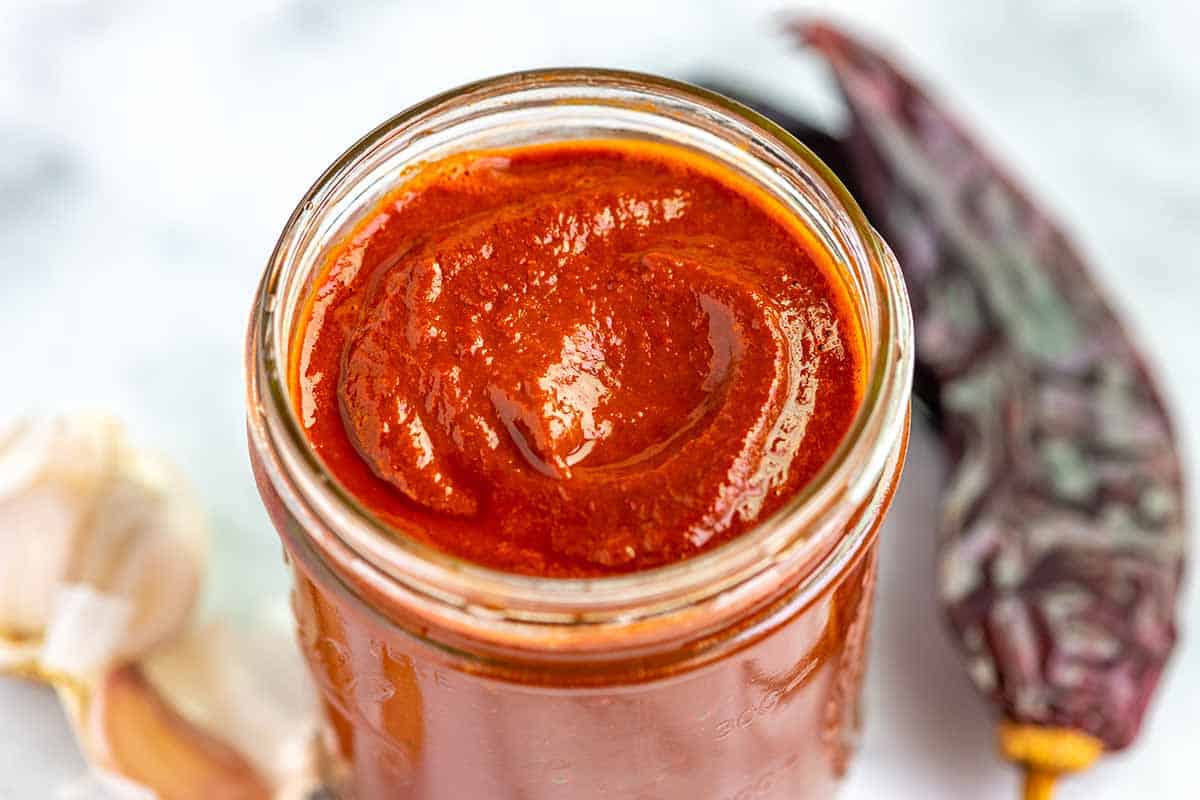


Forgot to add that a couple of teaspoons of vinegar is very authentic. Not noticeable, just a nice bright note.
Texan here. This is what I do, but I think I use more guajillos. And probably a few more peppers (recipe calls for 9). I do briefly toast the dried chiles and also strain the sauce. The allspice or some cloves is a must, and also the masa harina. If you remember the famous Wick Fowler’s 2-alarm chili seasoning it was one of his ingredients.I often use some chopped red bell peppers in addition to the onion and pobalano. If you’re in Texas, HEB’s frozen fajita blend is a good shortcut (onions and peppers combo). I get great results using a pressure cooker, about 30 minutes+slow release.Have also made this with venison and pork. Excellent if you can get it.For the beans crowd, I serve beans on the side. Whole or refried.I will try your cubed chuck method instead of the chili grind I often get.Thanks! I’m impressed with your recipes.
Excellent recipe! I was thinking that if I rehydrated the chilies in the hot stock instead of water, I would have even more flavor! And I wouldn’t throw any any of that flavored water. I will try this next week.
When do you pull out the cinnamon stick?
Hi Terry, you would remove it before serving (or leave it in and just don’t eat it).
Love the recipes, thanks for all the great posts. Have gotten many a compliment recreating your food. I’d recommend an extra step here for the chillies. If you dry fry them on medium in a skillet before hydrating, you release a lot of the oils which adds to the depth of flavour. Cut them open and remove seed as normal, fry couple minutes on each side. Wait for them to become aromatic but don’t allow them to burn – just as one would other spices.
Thanks for the tip! We actually do toast the chilies in a dry pan before rehydration, but you are right, toasting really releases the oils.
This came out great and got great reviews from my wife and neighbor. Rich and flavorful and I bumped up the heat a little. I was a trainer cook at Chili’s a long time ago and this had a similar profile, but with more complexity. I highly recommend this recipe.
We are so happy that the chili got rave reviews! 🙂